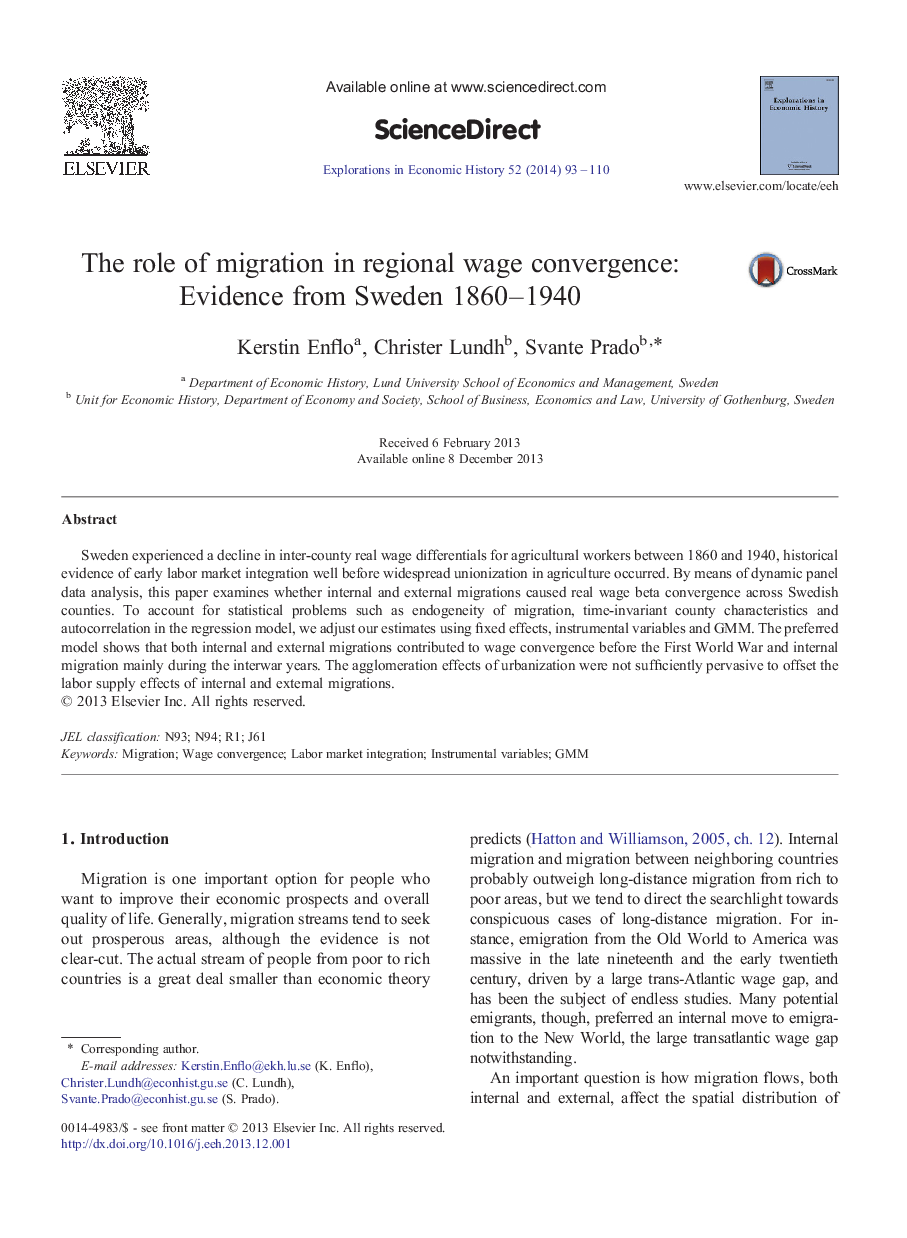| Article ID | Journal | Published Year | Pages | File Type |
|---|---|---|---|---|
| 5068762 | Explorations in Economic History | 2014 | 18 Pages |
â¢Swedish regional wage differentials contracted in 1870 to 1913 and in the 1930s.â¢Agglomeration effects did not offset the labour supply effects of migration.â¢External migration explains most of the contraction in 1870-1913.â¢Internal migration explains most of the contraction in the 1930s.â¢The econometrics used (GMM) attempts to circumvent the problems of endogeneity.
Sweden experienced a decline in inter-county real wage differentials for agricultural workers between 1860 and 1940, historical evidence of early labor market integration well before widespread unionization in agriculture occurred. By means of dynamic panel data analysis, this paper examines whether internal and external migrations caused real wage beta convergence across Swedish counties. To account for statistical problems such as endogeneity of migration, time-invariant county characteristics and autocorrelation in the regression model, we adjust our estimates using fixed effects, instrumental variables and GMM. The preferred model shows that both internal and external migrations contributed to wage convergence before the First World War and internal migration mainly during the interwar years. The agglomeration effects of urbanization were not sufficiently pervasive to offset the labor supply effects of internal and external migrations.
